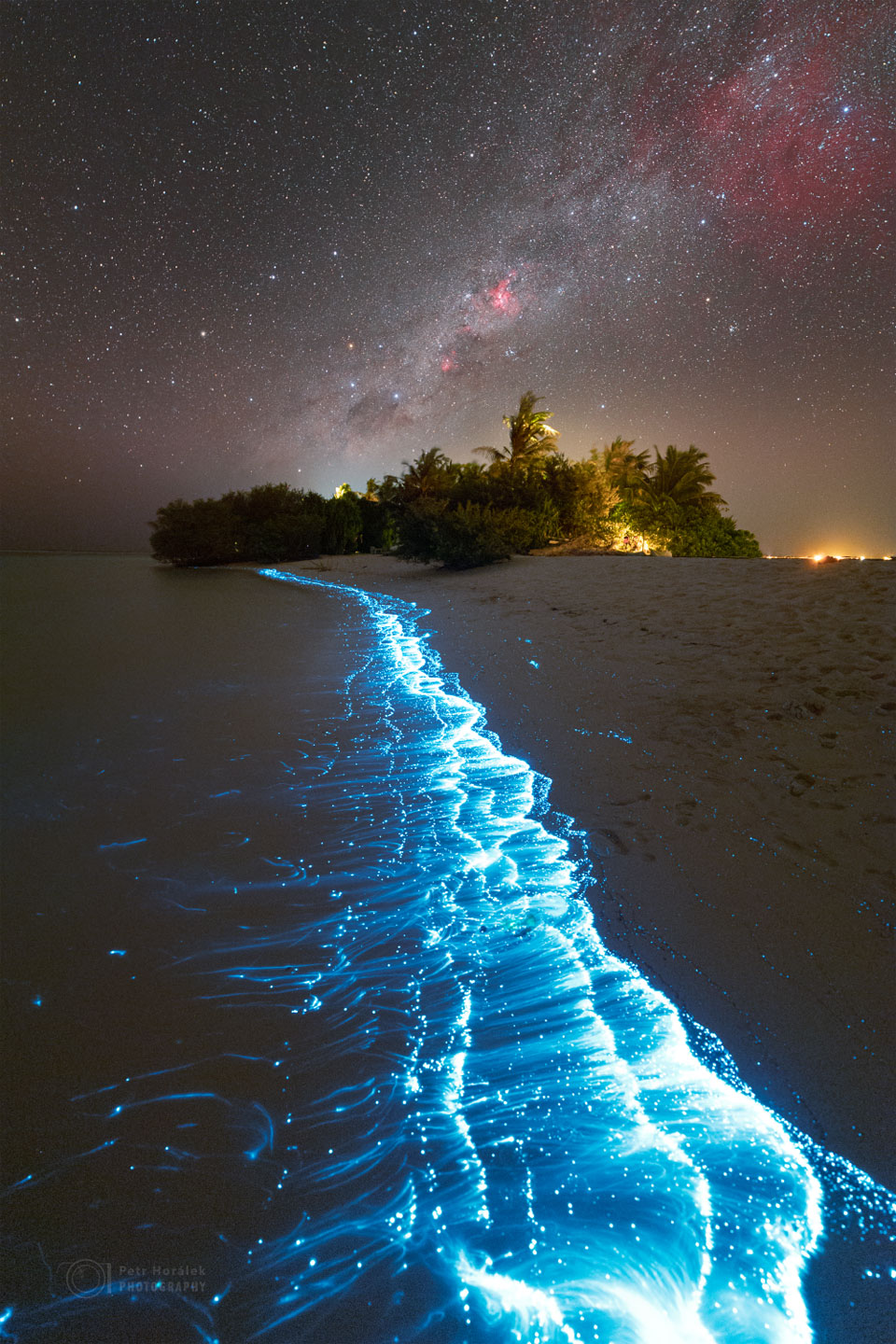2023年5月29日
Milky Way over a Turquoise Wonderland
Image Credit & Copyright: Petr Horálek / Institute of Physics in Opava, Sovena Jani
Explanation: What glows there? The answer depends: sea or sky? In the sea, the unusual blue glow is bioluminescence. Specifically, the glimmer arises from Noctiluca scintillans, single-celled plankton stimulated by the lapping waves. The plankton use their glow to startle and illuminate predators. This mid-February display on an island in the Maldives was so intense that the astrophotographer described it as a turquoise wonderland. In the sky, by contrast, are the more familiar glows of stars and nebulas. The white band rising from the artificially-illuminated green plants is created by billions of stars in the central disk of our Milky Way Galaxy. Also visible in the sky is the star cluster Omega Centauri, toward the left, and the famous Southern Cross asterism in the center. Red-glowing nebulas include the bright Carina Nebula, just right of center, and the expansive Gum Nebula on the upper right.
Tomorrow’s picture: nebular bell
蓝绿色仙境上空的银河
影像提供与版权: Petr Horálek / Institute of Physics in Opava, Sovena Jani
说明: 那里有什么在发光?答案取决于提问是指海还是天?在海中,不寻常的蓝色辉光是来自生物发光(译注:俗称蓝眼泪)。具体来说,微弱的光来自夜光虫,亦即受到激荡海浪激发的单细胞浮游生物。浮游生物则利用它们的辉光来惊吓和照亮捕食者。于今年的2月中旬,蓝眼泪在马尔代夫的一座小屿附近格外活跃,因此这位天文摄影者称之为蓝绿色的仙境。而作为对比,当时的天空更是充满很熟悉的恒星和星云之辉光。从人为照亮的绿色植物后方升起的泛白光带,是由数十亿颗恒星聚成的银河系中央盘面。此外,在天空中还可见到左侧的半人马座欧米茄星团,以及中间著名的南十字星官。影像中的泛红星云,则有中右侧的明亮船底座星云及右上角的广袤甘姆星云。
明日的图片: nebular bell







